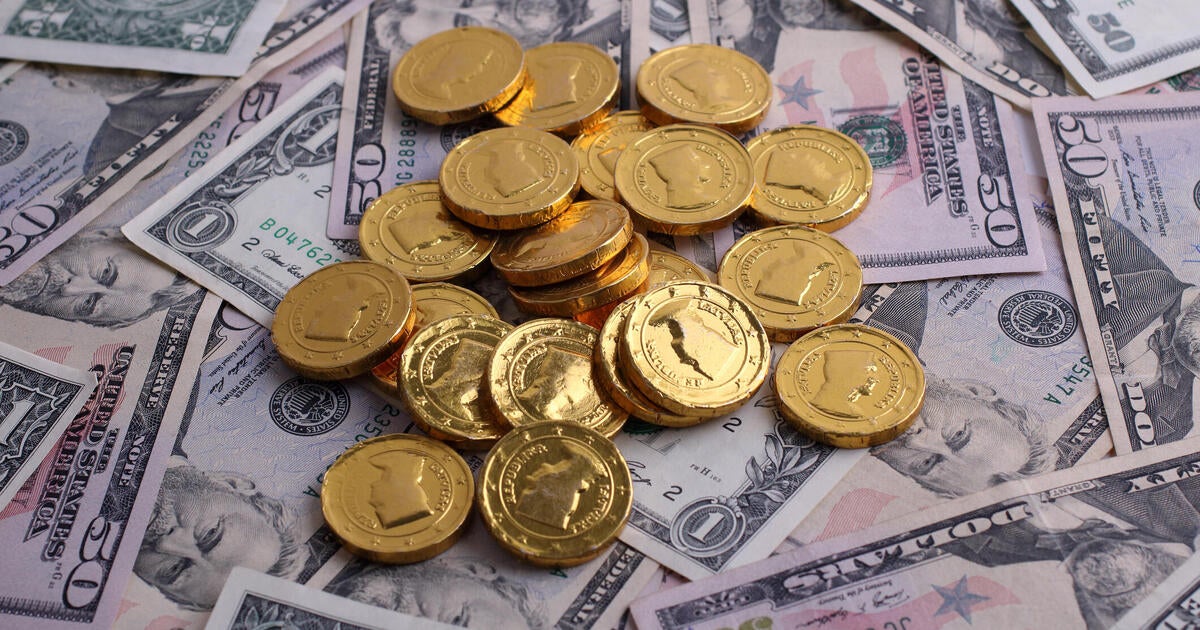We may receive commissions from some links to products on this page. Promotions are subject to availability and retailer terms.
Gold IRA
Sponsored

Getty Images
Gold’s price surge past $2,700 per ounce in October 2024 marked the beginning of a sustained rally. The momentum has only strengthened in 2025, with investors continuing to push the precious metal to new price highs.
Several forces power this remarkable rise, including inflation concerns and central bank purchases. But what’s particularly interesting is gold’s relationship with the U.S. dollar. While gold prices usually fall when the dollar strengthens, recent months have shown this pattern deviating — catching market watchers by surprise. Below, we’ll break down what investors should know now.
Wanted to invest in gold before the price rises again? Get started here now.
The relationship between gold prices and the dollar
Below, experts break down why the price of gold keeps climbing and the precious metal’s complex relationship with the dollar. Recent changes in market patterns, along with key economic indicators, offer clues about where gold prices might be heading.
Why gold prices have been climbing
“Gold can be a valuable asset in a portfolio precisely because it has [a] low correlation with other asset classes,” emphasizes Ben Nadelstein, head of content at Monetary Metals. This independence from traditional market patterns has caught investors’ attention, especially as markets face increasing uncertainty. The appeal of gold’s unique behavior has helped drive its impressive price climb, but it’s not the only factor at work. Industry professionals highlight other forces that have pushed gold prices higher:
- Central bank buying: Asian central banks, especially China and India, have dramatically increased their gold reserves.
- Investor sentiment: More investors are adding gold to diversify their portfolios amid inflation expectations and financial stability concerns.
- De-dollarization: The BRICS+ nations are reducing their dependence on the U.S. dollar.
- Market evolution: Gold prices now respond to a broader range of global economic factors.
How gold prices typically move with the dollar
Henry Yoshida, co-founder of Rocket Dollar, highlights that gold prices and the U.S. dollar traditionally move in opposite directions. “A stronger U.S. dollar will suppress the price of gold, while a weaker U.S. dollar will likely drive the price of gold higher through increased demand,” he explains.
But Michael Petch, co-founder and president of Argo Digital Gold, points out that this relationship isn’t absolute. “[When there’s] financial instability, gold and the dollar may [go up as people] seek safe-haven assets,” he says.
The complex interplay between gold and the dollar
“Large-scale government accumulation has added a demand-side force that can push [gold] prices higher, even in a strong-dollar environment,” Petch highlights. Beyond this influence, Kevin Bryan, director of customer experience at The Alloy Market, points to several often-overlooked factors that create a more nuanced dynamic:
- Supply limits: Mining strikes and environmental regulations can restrict gold production. As a result, gold prices may go up even when the dollar is strong.
- Geopolitical risks: Rising global tensions and trade disputes create uncertainty. Naturally, this drives people to invest in safe-haven assets such as gold — sometimes even alongside a strong dollar.
- Inflation concerns: Investors may turn to precious metals including gold and silver to hedge against inflation, regardless of current dollar strength.
- Digital gold investment vehicles: Investment products such as exchange-traded funds (ETFs) have made gold more accessible but also more sensitive to market sentiment. This creates new patterns in the gold-dollar relationship.
- Foreign policy changes: More countries are reducing dollar holdings in favor of gold, creating steady demand.
Gold’s price trajectory and key indicators to watch
The gold rush could continue and we may see new all-time highs in 2025, according to Yoshida. He sees a strong outlook, particularly if prices maintain support above $2,700. Several market indicators can help you track gold’s price trajectory. Petch suggests looking beyond the usual metrics such as inflation rates and the Federal Reserve policy. Here are the signals experts recommend keeping a close eye on:
- Central bank buying: Continued purchases by major national banks signal strong long-term demand.
- Real yields: Gold tends to shine when inflation-adjusted interest rates decline.
- U.S. fiscal policy and Treasury market: Growing concerns about U.S. debt levels could drive more investors to gold.
- Supply and demand: Gold lease rates and mining production levels help gauge market strength.
- Geopolitical tensions: Trade wars, tariffs and global instability often increase gold prices.
The bottom line
Understanding gold’s relationship with the U.S. dollar can help you make smarter investment decisions. Today’s gold market offers plenty of ways to invest. For example, you might choose gold bars and coins to hold tangible assets long-term or buy gold ETFs if you prefer easier buying and selling. Opening a gold IRA could be smart if you’re thinking about retirement planning.
But before jumping into gold investing, consult your financial advisor about which approach best fits your goals and portfolio strategy. They can help you weigh your options and create a sensible personalized plan.
Sharon Wu, a senior writer with over a decade of experience, specializes in consumer-focused content covering home and finance topics such as insurance, investments, credit, debt, mortgages and home security.










